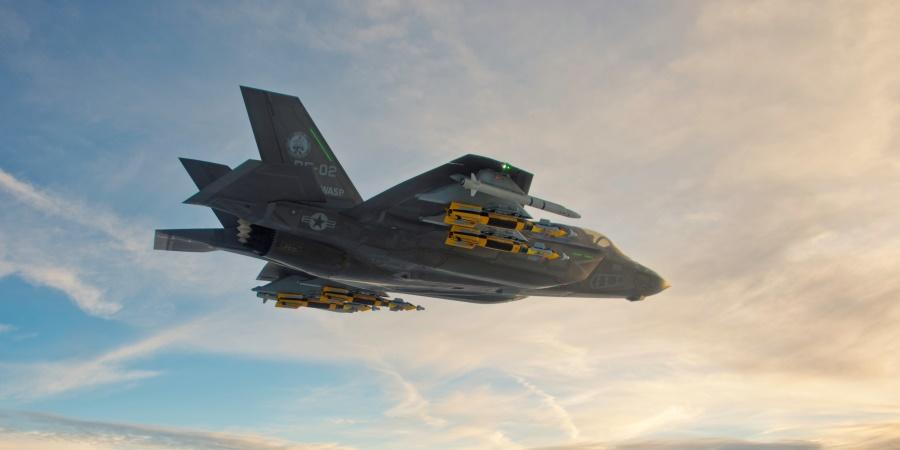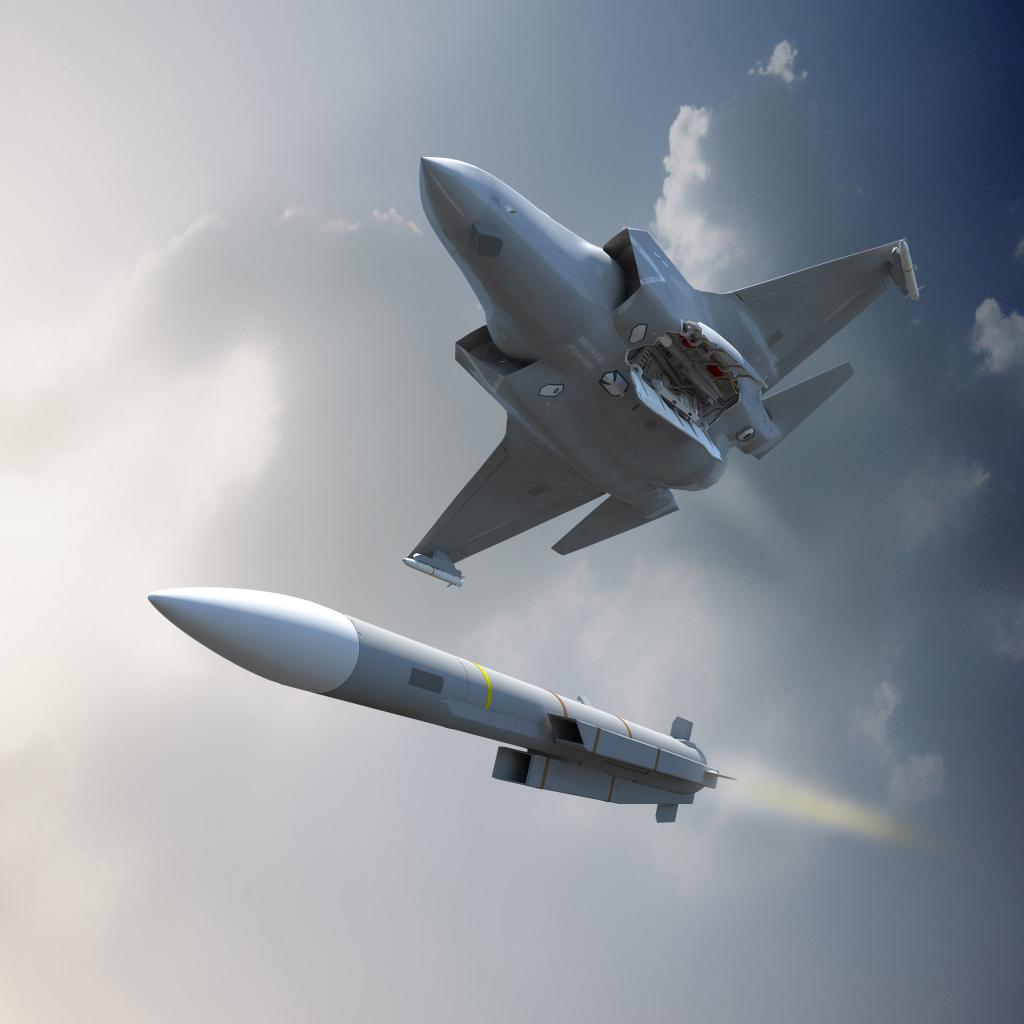The UK and Italian air forces have chosen to integrate two powerful missiles — Meteor and SPEAR 3 — into their F-35s. The Lockheed Martin F-35 Lightning II stealth fighter is operated by the US and 14 other countries.
Lightning Aircraft Carriers, ‘Super’ Fighter Jets; US Mulls Complete Change In Strategy To Counter China
Pakistan’s Nemesis Su-30MKI Fighter Jets Of Indian Air Force To Hold Mega Drills In Kashmir
The use of the same aircraft by partner nations enhances interoperability and helps in joint missions. For this and other efficiency reasons, Lockheed has refused to provide significant country-specific modifications to the fighter although it does allow some weapons capabilities.
The F-35 carries weapons internally in a stealth configuration, or externally in permissible environments with greater than 18,000 pounds of total ordinance, according to the company website.
Work starts on integrating @byMBDA next generation Meteor and Spear onto UK F-35 Fleet via @BAESystemsAir https://t.co/oZzLMvtLEh pic.twitter.com/v4agos42uo
— MBDAIncUSA (@MBDAIncUSA) March 19, 2019
This highly advanced combat jet is usually armed with AIM-120 advanced medium-range air-to-air missile (AMRAAM), AIM-9X “Sidewinder” short-range air-to-air missile, GBU-31 joint direct attack munitions (JDAM) guided bombs, laser-guided bombs, and an internal 25 mm GAU-22/A cannon.
Now, the UK and Italy are set to integrate powerful Meteor and SPEAR-3 missiles into their F-35 jets.
The Meteor Missile
The Meteor is a next-generation beyond visual range air-to-air missile (BVRAAM) system developed by European multinational defense company MBDA. It was designed to meet the needs of six European nations: the UK, Italy, France, Germany, Spain, and Sweden.
The missile is guided by an advanced active radar seeker and can engage a variety of targets from agile fast jets and small unmanned aerial vehicles (UAVs) to cruise missiles in any weather. It can also operate in the worst of clutter and countermeasure environments.

Meteor comes equipped with data link communication and can be operated using third-party data. This puts the pilot – the Meteor user – in possession of the most flexible weapon system.
This missile’s exemplary performance is achieved through a unique ramjet propulsion system. The ‘ramjet’ motor allows for the largest no-escape zone of any air-to-air missile by providing Meteor with thrust all the way to target intercept.
It is also equipped with impact and proximity fuses along with a fragmentation warhead to ensure total target destruction. The warhead can detonate on impact or at the optimum point of intercept to ensure maximum lethality.

By virtue of being a BVRAAM, it provides kinematic performance that is several times better than that of current medium-range air-to-air missiles (MRAAMs).
The SPEAR 3 Missile
Also developed by MBDA, the Spear 3 is a member of the Brimstone family of cruise missiles. It is a land-attack and antiship air-launched cruise missile that has been specifically designed to be internally carried by the F-35B aircraft that the UK uses.
This lethal munition is slated to enter the services in the mid-2020s. It can engage a wide variety of targets including ballistic missile launchers, air defense units, armored personnel carriers, main battle tanks, naval vessels, and fast-moving and maneuvering vehicles.
This compact mini-cruise missile is only 2 m long with a diameter of 0.18 m. However, it still has an estimated range of 120-140 km.
Being powered by TJ-150 turbojet provides the aircraft with high subsonic flying speeds. The missile uses an inertial navigation system and GPS to track its trajectory and location for midcourse guidance. The Spear 3 incorporates a millimeter-wave (mmW) seeker that enables fire-and-forget missions. It uses a semi-active laser (SAL) terminal seeker for targeting flexibility.

Despite being designed to be deployed on the stealthy F-35B, the missile still provides a standoff capability of at least 100 km to keep the aircraft away from hostile air-defense units, such as the Russian S-400 Triumf.
It also has a multi-effects warhead that is resistant to environmental stressors that may cause it to explode. The warhead can be programmed before or during flight and can be used against several targets.
The Israeli F-35s
Other countries using the F-35 have also added weapons suitable to their needs to the jet. Two prominent examples are the Israeli F-35 Adir incorporating the Python-5 short-range heat-seeking air-to-air missile (AAM) and the Norwegian Naval Strike Missile (NSM) to be incorporated in Australia and Norway’s F-35s.
The NSM is launched from a helicopter or ship platform by a solid rocket fuel booster and has a turbojet engine. This missile has a range of about 160 km. The NSM doesn’t have supersonic speeds but is rather focused on being extremely difficult to detect and shoot down.
It also has a sea-skimming capability that allows it to fly low over the wavetops to stay off enemy radars. The missile is capable of using high-G maneuvers in the terminal phase to make its path difficult to predict.
A variant of the NSM called the Joint Strike Missile (JSM) is designed for long-range strikes against land targets and ships. It has been tailor-made to fit in the internal weapons bay of the F-35.

On the other hand, competing with the Meteor and Spear-3 missiles is the Python-5. This is one of the most advanced AAMs in the world.
Weighing 105 kg, this fifth-generation missile provides the pilot with a full sphere launch capability. Not only can the missile be launched from very short to beyond-visual ranges, but it can also do so with greater kill probability.
The Python-5 boasts excellent resistance to countermeasures, regardless of countermeasures deployment or evasive target manoeuvers. This AAM has displayed great target detection and tracking.
In terms of a direct comparison, Python-5 definitely takes the first spot while Spear and Meteor seem to be tied with NSM according to experts. However, a combination of the two missiles, the way that the UK and Italy plan to integrate into their F-35s, could definitely have an edge over the NSM.
- Written by Shreya Mundhra/EurAsian Times Desk
- Follow EurAsian Times on Google News




